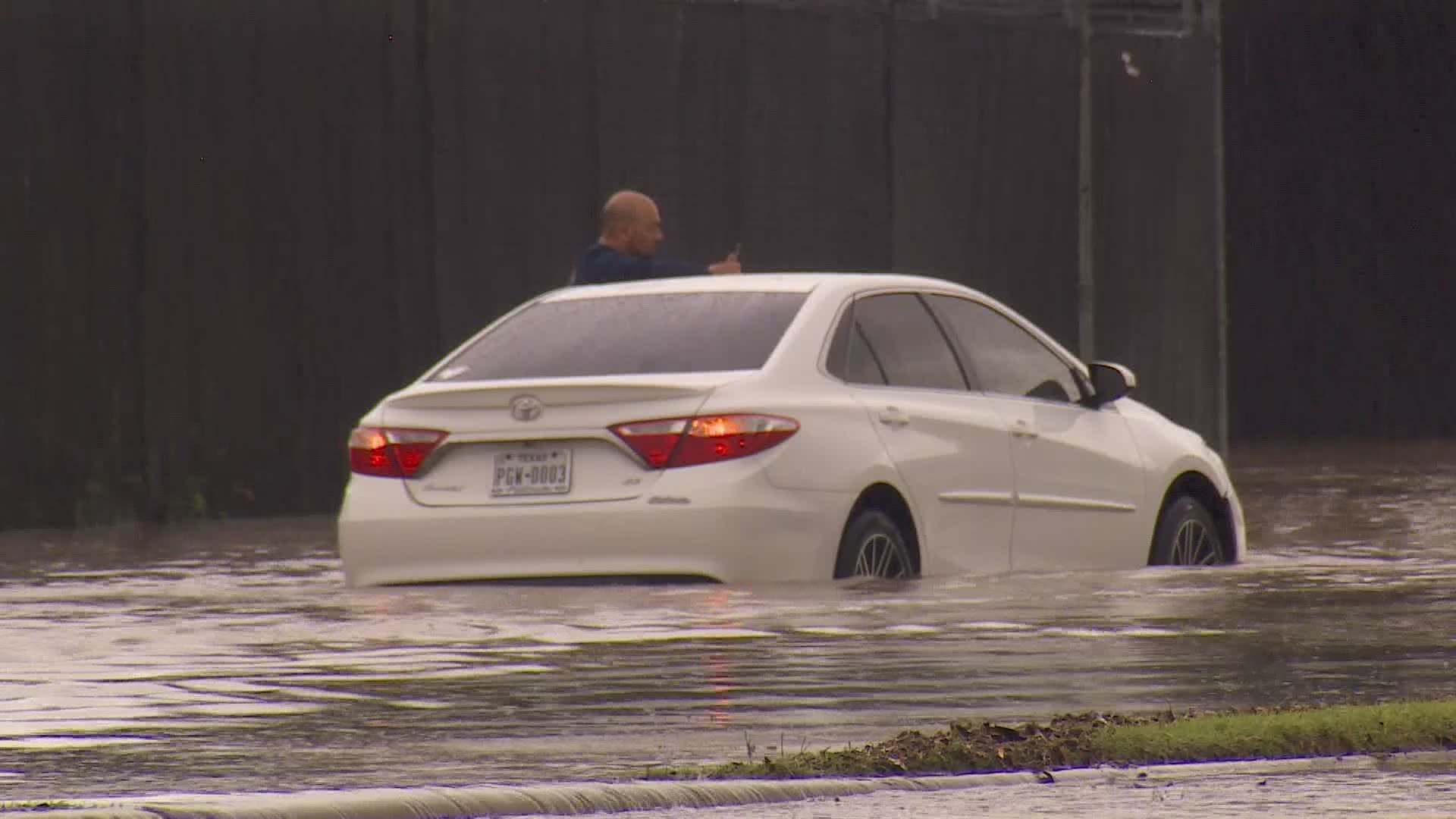With much of North Texas facing major rainfall, flash flood watches and warnings this week, it's a good time to remember why officials often urge drivers to "turn around, don't drown" and stay off the roads as much as possible.
According to the National Weather Service, flooding is consistently ranked as the second deadliest weather event.
One major risk involved in flooding is that water can easily sweep a vehicle off the road. According to the NWS, more than half of all the flooding deaths each year happen in vehicles.
Water as shallow as 6 inches can stall a car. If the water is 1 foot, smaller vehicles can be swept off the road. If the road is flooded between 18 and 24 inches, larger vehicles can also be swept off the road.
Even if the water does not look to be deep, the road underneath may be washed away, making driving through the water even more dangerous.
If you do get trapped in a car, experts encourage drivers to stay in the vehicle if possible. If the water level is rising, drivers should exit the vehicle and climb on top of the roof.
If you are not going through a flooded area, you should still take it slow when there is heavy rain on the road. Not only can rain cause you to hydroplane, but if you come upon a flooded road, it will be harder to stop.
Drivers should also be aware of where they park. If you park near a stream, dip or other low areas, you could be putting your vehicle at risk during a flooding event.
Drive-Texas.org has an updated map of roads with hazards like flooding and debris you can check for safety before heading out the door.
Click here to check your local radar
Driving safety tips during storms
The AAA Texas also shared these safety tips all drivers should be aware of during periods of heavy rain.
- Don't try to drive on a road that's covered in water; turn around and find an alternate route.
- If you find yourself in a situation where your car takes on water, leave the vehicle to get to safer, higher ground.
- Don't use cruise control. You get less traction on slick roads.
- Increase your following distance. You'll need more time to react to surrounding traffic.
- Driver more slowly to avoid hydroplaning. AAA Texas says some tires can lose contact with the road even at 35 mph.
- If your vehicle begins to skid, remain calm. Avoid slamming on your brakes; instead, look and steer in the direction you want your vehicle to go.
- Turn on your headlights
Click here to check current traffic conditions
And as rainstorms in the Texas spring often bring a chance for tornados, hail and high winds, it's important for drivers to know what to do in those situations as well.
The NWS has emphasized that during a severe thunderstorm or tornado people should never stop under a bridge or overpass. The agency said a bridge does not offer protection from strong winds. People can also cause an accident by being stopped under a bridge, the NWS said.
Weather officials also said bridges and overpasses do not protect cars from tornadic winds or debris.
Severe thunderstorm safety tips
Some safety tips from the NWS Fort Worth include:
- Seek shelter in a strong, sturdy building.
- Stay inside and away from windows.
- Never stop under a bridge or overpass.
Safety tips during a tornado
Some tips to stay safe include:
- Move to an interior room on the lowest level of your home, such as a closet or bathroom.
- If possible, leave mobile homes to shelter with friends or family in a permanent building.
- Never stop under a bridge or overpass.
Remember to download the WFAA app to check one of our dozens of local radars near you as well as the latest forecast, cameras and current conditions.

